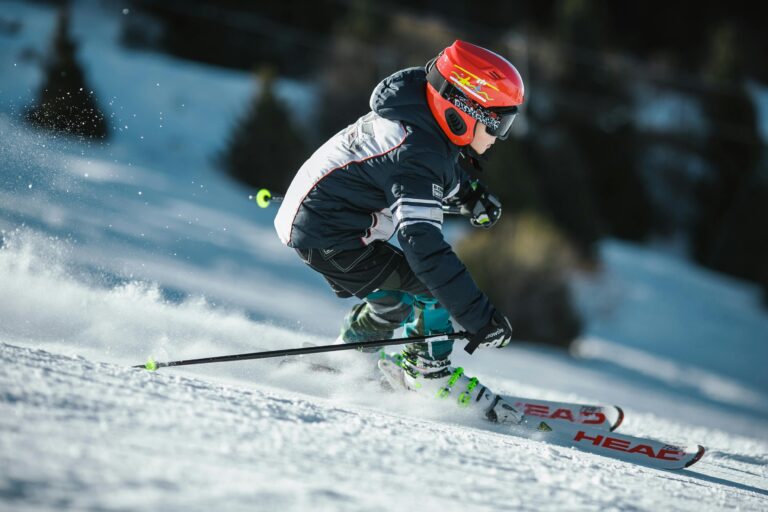Skiing without goggles is possible but poses significant risks, including reduced visibility, eye exposure to harsh elements, and potential long-term eye damage from UV rays. Thus, it’s generally recommended to wear proper protective eyewear for safety and optimal skiing enjoyment.
Skiing feels freeing—whether you’re just starting out or have been shredding slopes for years. But here’s the thing: ditching your goggles can turn that thrill into a tricky situation fast. Imagine speeding down a slope and suddenly getting blinded by the sun bouncing off the snow. That split second of glare? It’s when accidents happen.
Plus, you’re leaving your eyes wide open to biting winds, snow, and harmful UV rays. Snow reflects up to 80% of UV rays, which is a big deal. I learned this the hard way once—after a day without goggles, my eyes were red, sore, and gritty. That’s snow blindness kicking in, and trust me, it’s no fun. Over time, all that UV exposure can lead to serious problems like cataracts or even lasting vision loss.
So yeah, goggles aren’t just a fashion statement; they’re your eyes’ best friends on the mountain.
What Are the Risks of Skiing Without Goggles?
Skiing without goggles isn’t just uncomfortable—it’s risky. Here’s why:
- Visibility Issues
The blinding glare off fresh snow can make you miss obstacles or other skiers. I’ve been caught off guard more than once when the sun suddenly blinds me. It’s like skiing blindfolded, and that’s a nightmare. - UV Exposure and Snow Blindness
Your eyes can get inflamed and painful from UV rays reflecting off snow. Snow blindness sucks—red, swollen eyes that sting and blur your vision for hours. Skipping goggles ups your chances of this painful condition. - Long-term Eye Health Impacts
No one wants cataracts or macular degeneration as a souvenir from a fun day on the slopes. Years of unprotected exposure can slowly damage your eyes, so it’s smart to guard them.
Why Are Goggles Essential for Skiers?
Goggles do way more than protect your eyes—they make skiing better.
- Protection Against UV Rays
Quality goggles block out harmful UV rays. Polarized lenses are my go-to because they cut the glare and make the snow easier to read. - Wind and Debris Filtration
When you’re zooming downhill, icy wind feels brutal on your eyes. And flying snow or tiny ice shards? No thanks. Goggles shut all that out. - Enhanced Contrast for Better Visibility
Certain goggles actually amp up contrast, helping you spot bumps, rocks, or icy patches. That split-second clearer view can keep you safe.
Alternatives to Goggles: Are They Effective?
Not a fan of goggles? A few alternatives exist—but none quite match their performance.
- Sunglasses vs. Goggles
Sunglasses can help with UV protection but don’t seal out cold wind or snow. Plus, they might slip off if you’re moving fast or don’t fit right. I tried sunglasses once, and about halfway down, I was wiping snowflakes from my eyes. - Face Masks
Face masks keep your face warm and block some wind but don’t protect your eyes from UV or glare. They’re best paired with something else. - Applicability in Different Environments
On gloomy, overcast days, good sunglasses might work okay. But when the sun’s out, goggles still win hands down.
What Do Experienced Skiers Say About Eyewear?
I’ve chatted with plenty of ski buddies, and most swear by goggles. Greg, a guy who’s been skiing for over ten years, told me, “I skipped goggles once, and the glare nearly made me downslide into a bush. Not worth it.”
Your choice might depend on:
- Type of Terrain: Groomed slopes might feel safer without goggles, but off-piste? You definitely want eye protection.
- Personal Preference: Some people just hate having gear on their face—even if it makes them safer.
Psychological Effects of Wearing or Not Wearing Goggles
How you feel on the slopes ties directly to your gear comfort—and that includes goggles.
- Psychological Implications
Wearing goggles can boost your confidence because you’re less worried about glare or cold damage. Without them, you might feel distracted or uneasy. - Comfort Levels in Varied Weather Conditions
Bad weather can make skiing miserable without goggles. Once I started wearing mine consistently, even harsh windy days felt better. - Preferences Based on Personal Experience
For beginners, goggles can feel weird at first, but once you get used to them, they’re a game changer. Pros rely on them because they know the risks.
How to Choose the Right Ski Eyewear
Picking the right goggles will make a big difference:
- Key Features to Look For
– UV Protection: Non-negotiable.
– Lens Type: Polarized lenses help reduce glare and sharpen your view.
– Foam Padding: You want comfort because you’ll forget they’re there. - Recommendations for Weather Conditions
– Sunny Days: Go for dark lenses with strong UV filtering.
– Overcast Days: Yellow or amber lenses boost contrast when it’s cloudy. - Importance of Fit and Comfort
If your goggles slide or pinch, that’s a distraction. The fit should be snug but comfy.
FAQs About Skiing Without Goggles
Is it safe to ski without goggles?
Skiing without goggles can pose several risks, including decreased visibility and increased exposure to UV rays, which can result in eye injury or long-term damage. For a safe skiing experience, it’s best to wear proper eye protection.
What alternatives exist if I don’t want to wear goggles?
If you choose not to wear goggles, sunglasses with UV protection and face masks can serve as alternatives. However, they may not provide the same level of protection against glare and wind that goggles offer, which is essential in snowy conditions.
Can wearing goggles help with visibility in bright conditions?
Yes, wearing goggles significantly enhances visibility in bright conditions by reducing glare and improving contrast against the snow. This is crucial for maintaining clarity and attention while skiing downhill.
Skiing is a blast—don’t let poor eye protection turn it into a pain. With the right goggles, you’ll see better, feel safer, and enjoy every run more. If you want to dig deeper, check out our guides on skiing dangers and proper techniques.
Ready to boost your skills? Here are some awesome videos on snowboarding techniques:
And this one covers skiing safety tips too:






